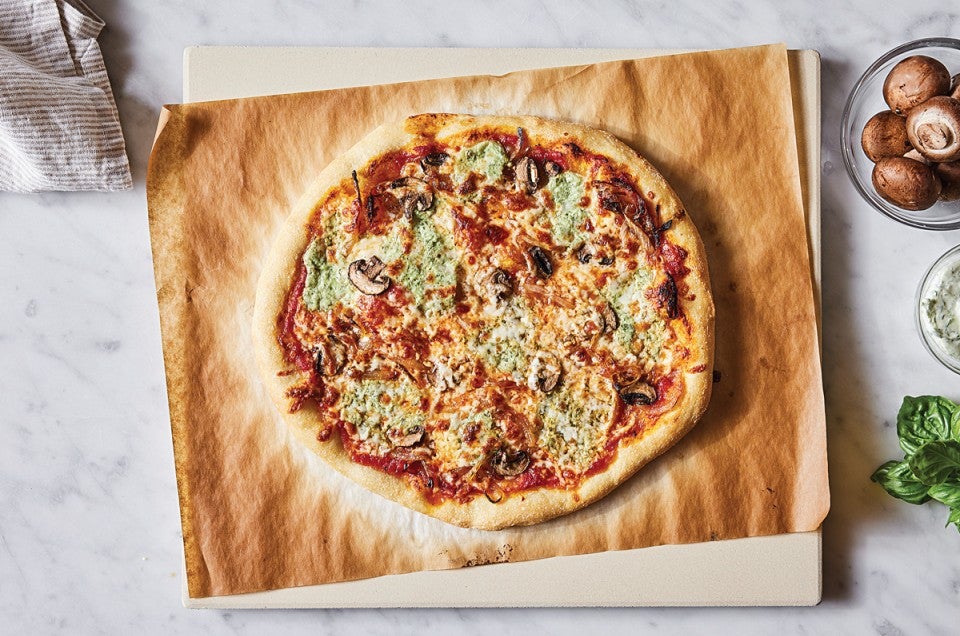


Baking with a pizza stone (also called a bread stone or baking stone) or baking steel (also called a bread steel) in your oven can boost the browning of baked goods, give you the crispiest crusts and loftiest oven spring for pizza, artisan breads, and pita, and even improve your pies. But with all of that gooey cheese, runny pizza sauce, and bubbling fruit juice in the mix, your baking surface is bound to get messy with baked-on residue. So what’s the best way to clean off a baking steel or stone?
First, know that some patina and staining is normal. Pizza stones and baking steels will darken and take on varied tones as they season with every bake. As long as any patches of discoloration aren’t sticky or rough, you can leave them be. But for stuck-on gunk, which might smoke or cause a burning smell the next time you bake, some attention is warranted.
Baker’s tip: Try baking on parchment for easy clean up, especially if you’re making a higher fat recipe that can leak into the stone. Just note, the maximum temperature rating for most parchment paper is below 500°F, and at temperatures between 450°F and 500°F parchment’s exposed edges begin to char. To be safe, keep a close eye on anything being cooked at temperatures above 450°F (especially anything on an upper rack).

To clean a pizza stone, first make sure that it’s completely cool. (Leaving it in the turned-off oven for a few hours or overnight will do the trick!) Once it's cool, gently scrape off any stuck-on food or residue using a wooden or plastic scraper. Avoid using water to clean pizza stones and never submerge them, as the porous material can absorb water and cause the stone to crack in the oven if not fully dried. Instead, use a dry cloth or a paper towel to wipe away loose debris.
For really stubborn stains, you can create a paste with baking soda and a small amount of water, apply it to the stains, and let it sit for a few hours to fully air dry before brushing off with a dry brush or towel. Avoid using soap on unglazed ceramic, as it can create a soapy-tasting pizza or bread the next time you use it.

For baking steels, after cooling and scraping them, you can wash them with light soap and water, rinse, and dry completely. Then, you’ll need to re-season the steel. Put a dab of vegetable oil on the baking steel and use a paper towel to spread a thin film over both sides. Bake in a 375°F to 400°F oven for 1 hour. Then, turn off the oven and let the steel cool inside. If for some reason rust spots develop, scrub them off with fine sandpaper or steel wool to remove them. Once the rust is gone, re-season the steel.
The good news is that you probably won’t need to deep clean your pizza stone or baking steel very often. Barring a big spill, brushing off any crumbs or loose debris after you bake should be enough!


Cover photo by Kristin Teig; food styling by Liz Neily.

